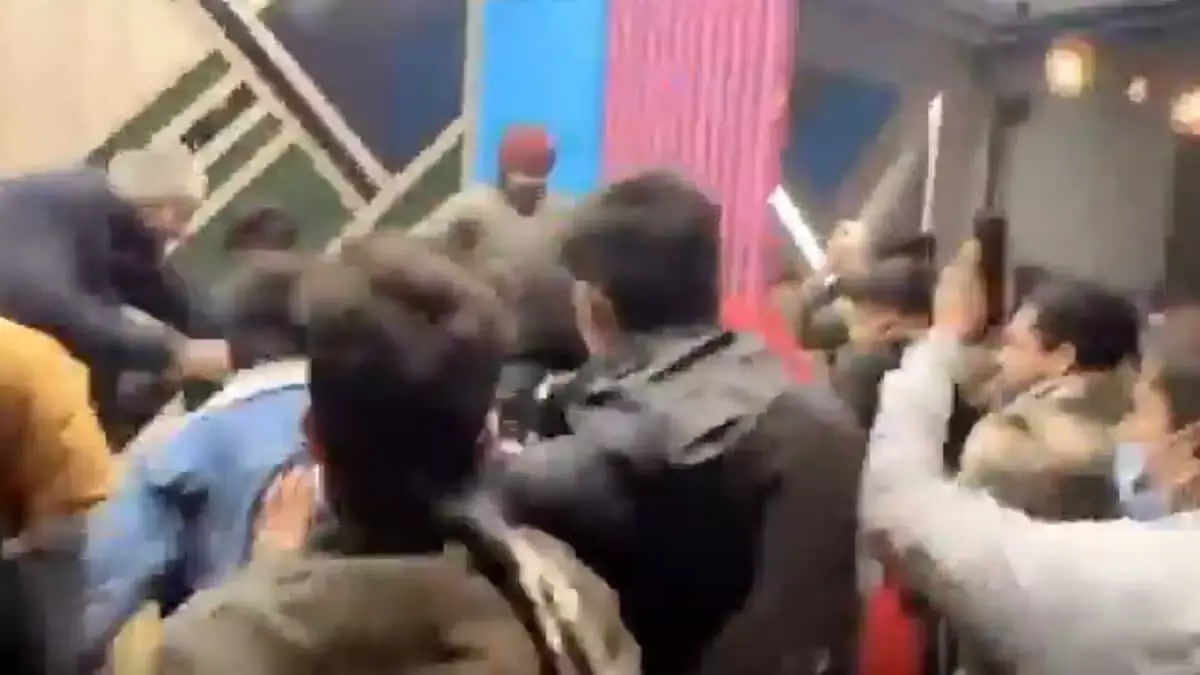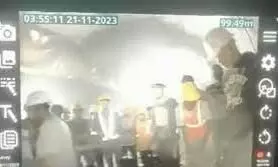
Workers trapped in Uttarkashi tunnel seen for first time using endoscopy camera
text_fieldsRescue operations in Uttarakhand have reached a critical stage as images of the workers trapped inside a tunnel for the past 10 days have been captured using an endoscopy camera.
The breakthrough came as officials managed to send the camera through a six-inch pipe, previously used to deliver food supplies to the trapped workers.
Using this method, rescue teams were also able to communicate with some workers via walkie-talkies, urging them to come forward to interact with the camera. "Aap camera ke paas walkie talkie pe aake baat karein (come in front of the camera and talk to us through Walkie Talkie)," an official's voice was heard, attempting to establish contact.
The workers, who had only received dry fruits and water before, were provided with khichdi in glass bottles as their first hot meal after 10 days of being trapped. Rescue operation in-charge Colonel Deepak Patil announced plans to send mobile phones and chargers to the workers through the pipe.
Numerous attempts to rescue the trapped workers faced challenges due to the area's topography and rock formations.
The Centre's devised action plan includes five options involving drilling from three sides to access the trapped workers. Five different agencies have been assigned specific operations as part of this plan.
The strategy involves drilling two tunnels horizontally from the right and left sides of the main tunnel, alongside a vertical shaft from its top. This relentless rescue effort engages multiple agencies, including NDRF, SDRF, BRO, and ITBP, with the recent arrival of an international tunnelling expert team and a robotics team from DRDO.
Since the tunnel collapse, 41 workers have been trapped inside, all reported safe and receiving essential supplies through steel pipes drilled into the opening. The tunnel, part of the Char Dham project, aims to improve connectivity to Hindu pilgrimage sites, including Badrinath, Kedarnath, Gangotri, and Yamunotri.
The situation still remains critical.

















